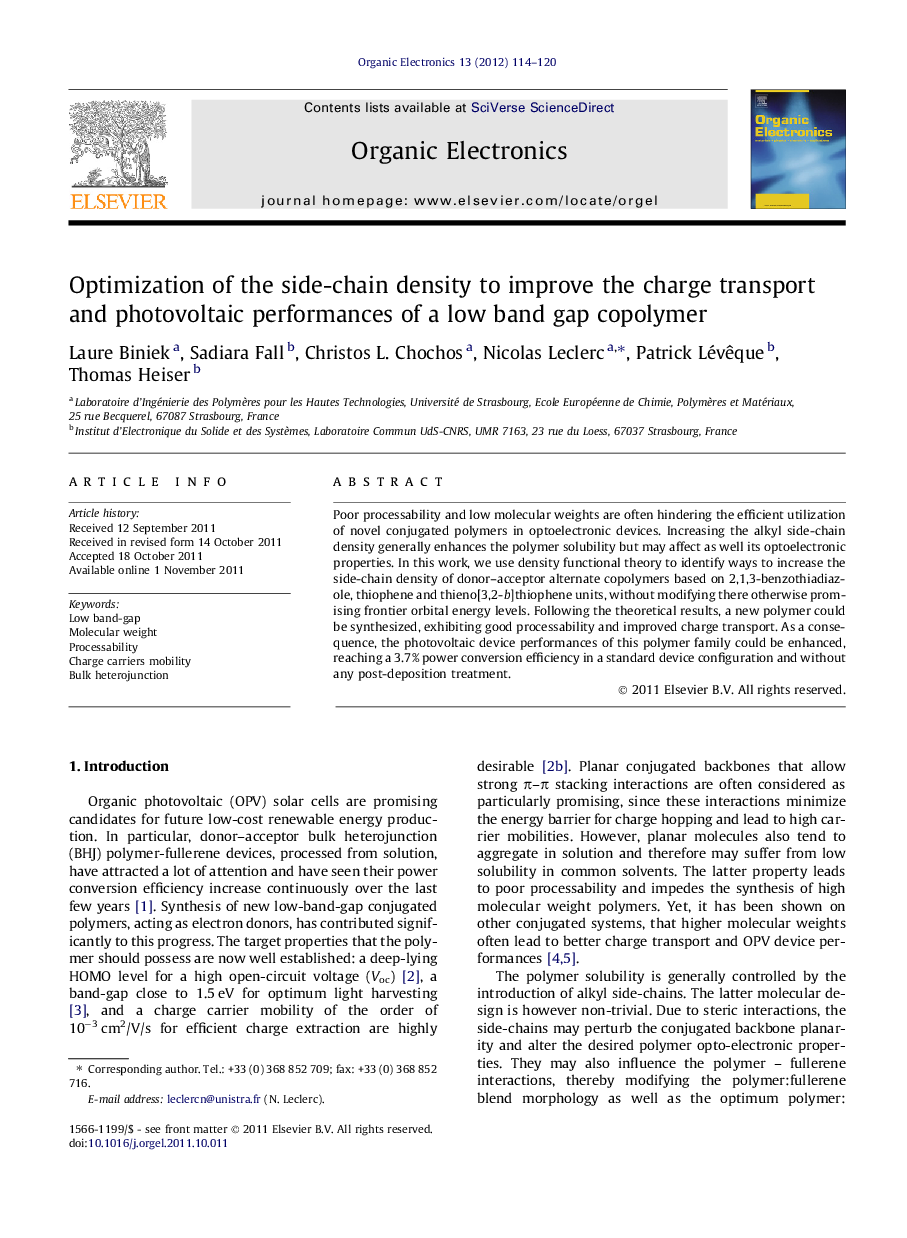| Article ID | Journal | Published Year | Pages | File Type |
|---|---|---|---|---|
| 1264631 | Organic Electronics | 2012 | 7 Pages |
Poor processability and low molecular weights are often hindering the efficient utilization of novel conjugated polymers in optoelectronic devices. Increasing the alkyl side-chain density generally enhances the polymer solubility but may affect as well its optoelectronic properties. In this work, we use density functional theory to identify ways to increase the side-chain density of donor–acceptor alternate copolymers based on 2,1,3-benzothiadiazole, thiophene and thieno[3,2-b]thiophene units, without modifying there otherwise promising frontier orbital energy levels. Following the theoretical results, a new polymer could be synthesized, exhibiting good processability and improved charge transport. As a consequence, the photovoltaic device performances of this polymer family could be enhanced, reaching a 3.7% power conversion efficiency in a standard device configuration and without any post-deposition treatment.
Graphical abstractFigure optionsDownload full-size imageDownload as PowerPoint slideHighlights► We study the role of the molecular weight on the properties of a LBG copolymer. ► Adding two alkyl-thiophene units increases the molecular weight. ► The increase of the molecular weight does not change the optical properties. ► The increase of the molecular weight improves only the charge transport property. ► The power conversion efficiency increases up to 3.7%.
